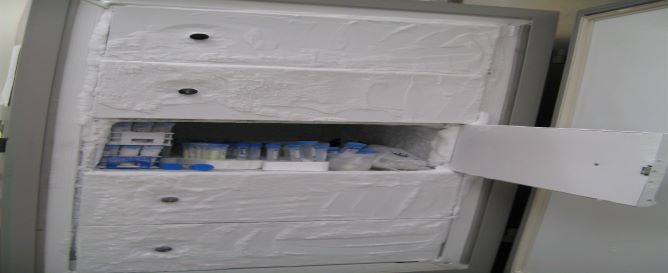Staying Frozen but Vitrified

Ways to resolve Warehouse WiFi Issues
October 5, 2018
Sensing the Water in the Air
December 18, 2018What do you do when you want to put something into long-term frozen storage without worrying about being damaged by the formation of ice crystals? You need a constant temperature below minus thirty degrees Celsius.
Laboratories use ultra-low freezers to protect biological samples and temperatures below minus thirty degrees Celsius. Laboratories need to keep samples at a vitrified state to keep them from being damaged by the formation of ice crystals. This is done by rapidly freezing the samples and avoiding crystallization, this being vital for long-term storage. The ultra-low freezer can run at a temperature between -45°C and -90°C and run much colder than the conventional freezer. Like, conventional freezers Ultra-low freezers come in two types such as a vertical cabinet or horizontal unit door on the top. Typically, the vertical units are used by laboratories to save space and are simpler to move.

Ultra-low freezers have shelves to place research samples. Each shelf has an internal door to maintain a uniform temperature as much as possible, where a sample is not being placed or removed. To maintain the temperature inside the freezer, between the outside wall and the inside one, there is polyurethane insulation that has a high insulation ecoefficiency keeping the temperature steady for many hours. Most importantly, to maintain the freezing status is the seal which is located around the entire edge of the outside door. The most effective freezers use silicone quadruple-step seals, ensuring the steadiest temperature. The outside door is also insulated with polyurethane.
The refrigeration system on an ultra-low Freezer uses air-cooled condensers when used in a laboratory. Using tubular Copper-aluminum batteries arranged to offer as much surface heat transfer as possible. The circulation of the cooling air for the condenser is forced by an engine-driven fan and by the expanding refrigerant fluids in capillary tubes. Evaporation takes place through steel plate heat exchangers in the form of coils located at the top and running along the walls.
The refrigerant fluids used are gaseous chemical compounds that can easily be liquefied and have high critical temperatures and low critical pressures while limiting hazard and toxicity. The most ecologically accommodating refrigerant fluids used in ultra-low freezers are R170, R23, and R290.
For long-term frozen storage without worrying about samples being damaged by the formation of ice crystals and to keep the constant temperature below minus thirty degrees Celsius use ultra-low freezers.
